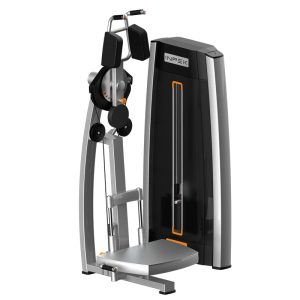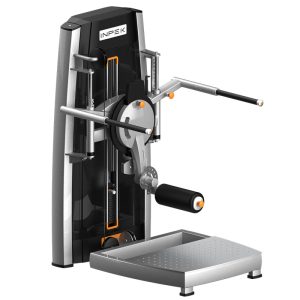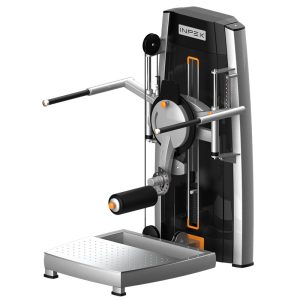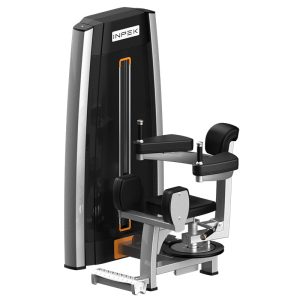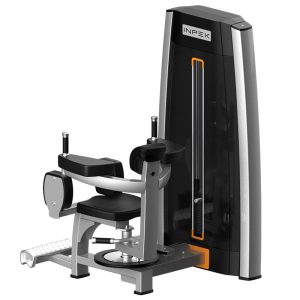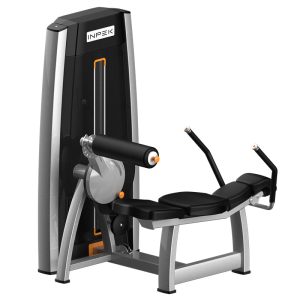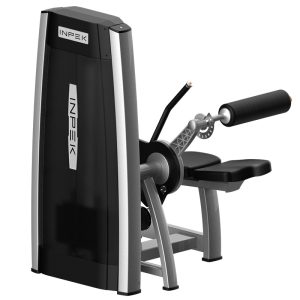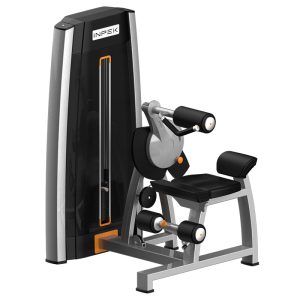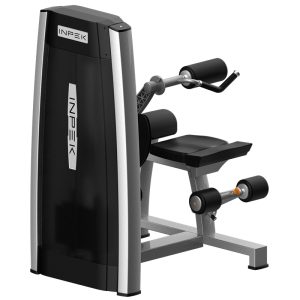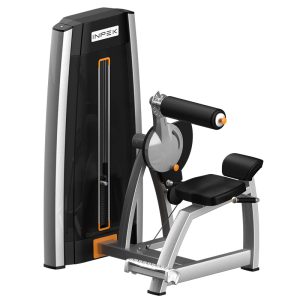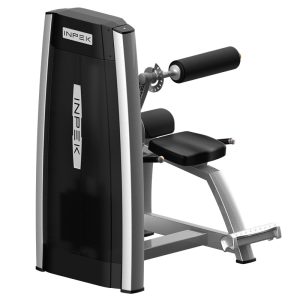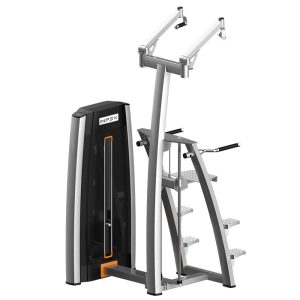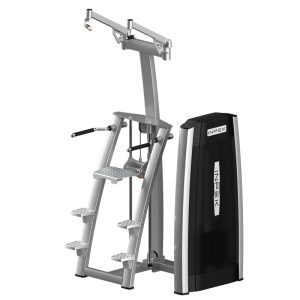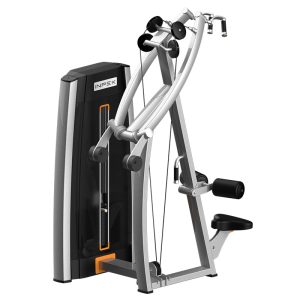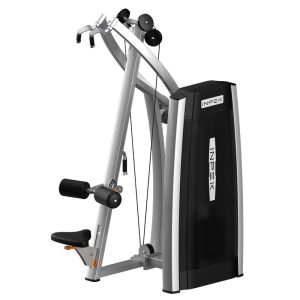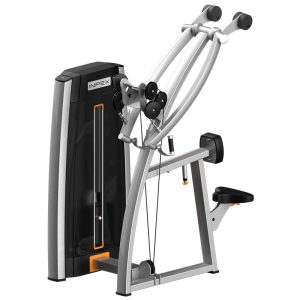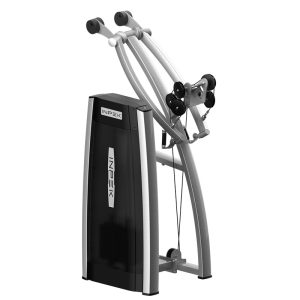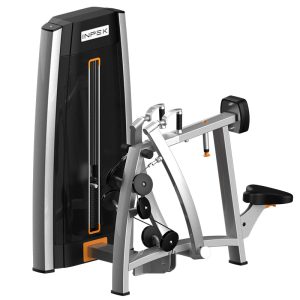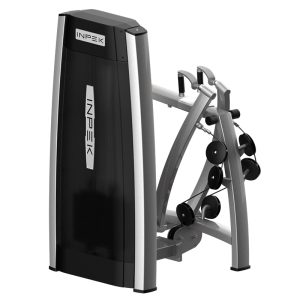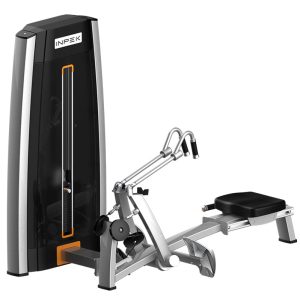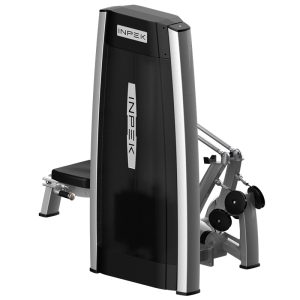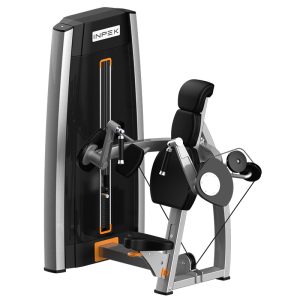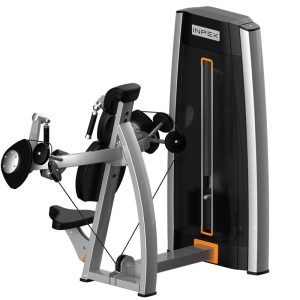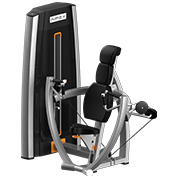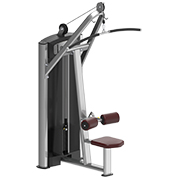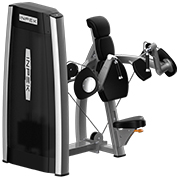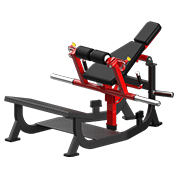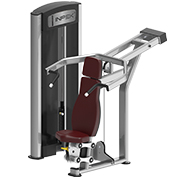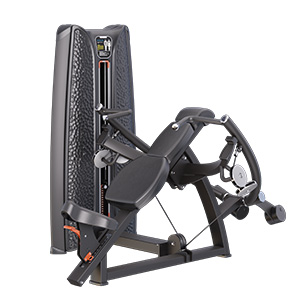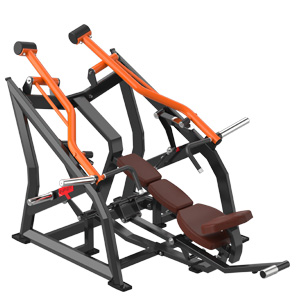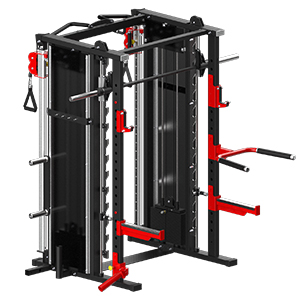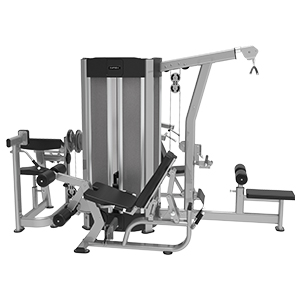Purchase Best Leg Press Machines for Gym
- Home
- /
- Leg press machines
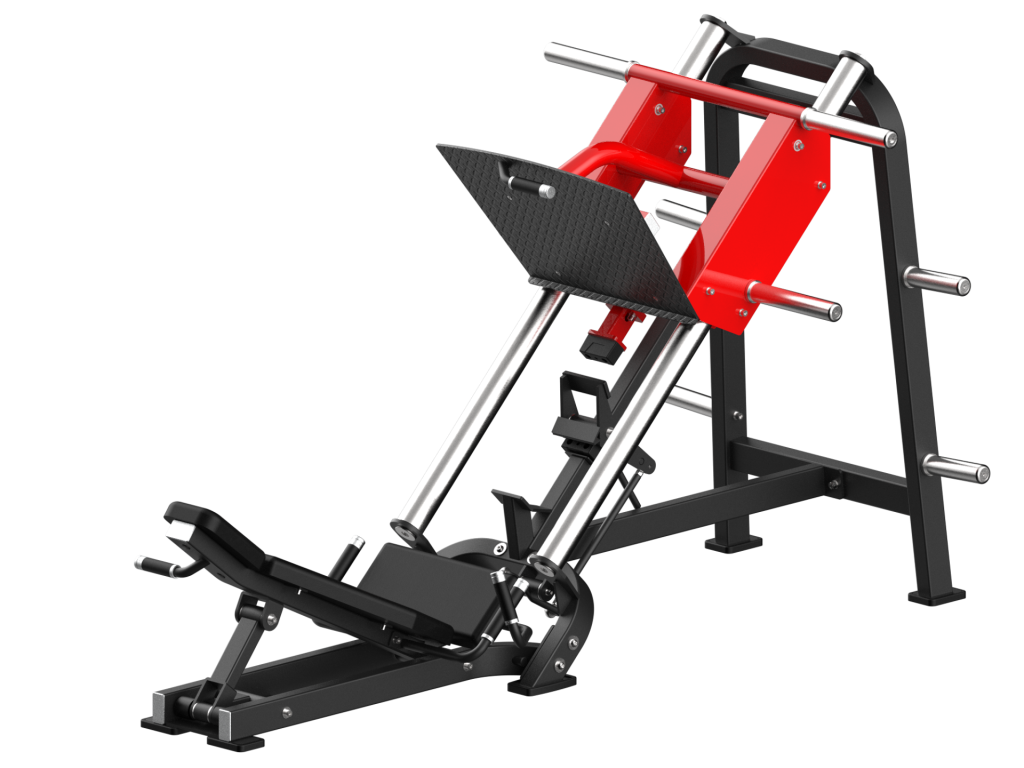
Take your lower body training to the next level with our premium leg press machines designed for all fitness levels. Built to last and perform, our machines feature high weight capacity, adjustable positions, and ergonomic footrests to accommodate a variety of positions and training styles. Whether you’re targeting your quads, hamstrings, or glutes, our leg press machines provide the stability and versatility you need for a safe and effective workout.
Supporting the customized needs of every customer worldwide, we ensure a seamless experience from purchase to setup. Find the perfect leg press machine from our extensive collection to push your limits and maximize your leg workout!

Types of Leg Press Machines – Find the Perfect Fit for Your Gym
When it comes to leg press equipment, there are several types to choose from, each catering to different fitness needs and gym setups. Understanding the differences between these types will help you make an informed decision and select the best leg press machine for your gym.
45-Degree Leg Press Machine
- Weight Limit: Up to 1,000 lbs
- Price Range: $1,500 – $3,000
- Suitable For: Intermediate to advanced users
Advantages: The angled design reduces stress on the lower back while providing a full range of motion. It’s ideal for targeting the quads, hamstrings, and glutes. The adjustable backrest and compact footprint make it a popular choice for commercial gyms.
Horizontal Leg Press Machine
- Weight Limit: Up to 800 lbs
- Price Range: $1,200 – $2,500
- Suitable For: Beginners
Advantages: This low-impact design is perfect for those who want to minimize stress on their joints. Its space-saving construction and ease of use make it a great addition to a small gym.
Vertical Leg Press Machine
- Weight Limit: Up to 600 lbs
- Price Range: $1,000 – $2,000
- Suitable For: Advanced users and professional gyms
Advantages: The vertical design allows for deeper muscle engagement, making it ideal for strength training. It’s also compact and versatile, offering a unique workout experience for advanced athletes.
Whether you’re looking for a leg extension machine or a multi-functional leg workout machine, Inpek Fitness offers a variety of options to suit your needs. Our leg press machines are designed with precision and built to last, ensuring that your gym stands out in a competitive market.
How to Purchase the Best Leg Press Machine for Your Gym
Assess Your Gym Space
Before purchasing a leg press machine, measure your available space to ensure the equipment fits comfortably. Consider the machine’s footprint and how it will integrate with your existing gym layout.
Determine Your Budget
Our range of leg press machines is available to suit every budget, from affordable to premium models. Compare prices and features to find the best machine for your money.
Consider User Needs
Think about the fitness levels of your clients. If your gym caters to beginners, a horizontal leg press machine might be the best choice. For advanced athletes, a 45-degree or vertical leg press machine would be more suitable.
Check Weight Capacity
Ensure the machine can handle the maximum weight your users will lift. Our leg press machines are built with heavy-duty materials to support high weight limits, providing a safe and stable workout experience.
Look for Durability and Quality
At Inpek Fitness, we use premium materials like reinforced steel to ensure our leg press equipment is durable and long-lasting. Investing in high-quality machines will save you money on repairs and replacements in the long run.
Explore Customization Options
We understand that every gym is unique. That’s why we offer customizable solutions to help you find the perfect leg press machine that aligns with your gym’s aesthetic and functional needs.
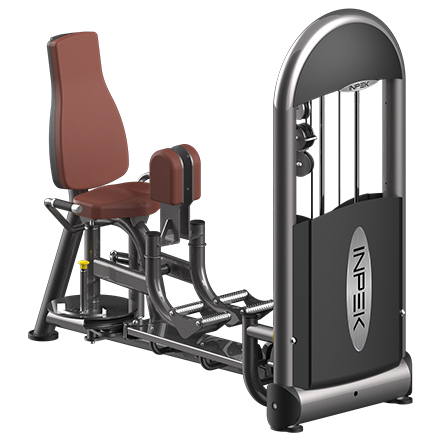
Key Features of Inpek Fitness Leg Press Machines
Our leg press machines are designed with cutting-edge features to enhance your workout experience and ensure maximum safety and comfort. Here are some of the standout features that set our equipment apart:
Adjustable Footplate
The footplate on our leg press machines can be adjusted to accommodate different foot positions, allowing users to target specific muscle groups such as the quads, hamstrings, and glutes.
Ergonomic Design
We prioritize user comfort by incorporating ergonomic designs that reduce strain on the back and joints. This ensures a safer and more enjoyable workout experience.
Heavy-Duty Frame
Built with premium steel, our leg press machines are designed to withstand heavy use in commercial gyms. The robust construction ensures stability and durability, even under intense workout conditions.
Smooth Glide Mechanism
Our machines feature a smooth glide mechanism that ensures seamless movement during exercises, providing a fluid and efficient workout experience.
Safety Lock System
Safety is our top priority. Our leg press machines come equipped with a safety lock system that prevents accidents and injuries during use.
Compact and Space-Saving
We understand the importance of space optimization in your gym. Our Leg Press machine has a compact, space-saving design, making it an ideal choice for commercial gyms.
Whether you’re using a leg extension machine or a multi-functional leg workout machine, our equipment is designed to deliver unmatched performance and reliability.
Benefits of Training with a Leg Press Machine
Incorporating a leg press machine into your workout routine offers numerous benefits for both gym owners and fitness enthusiasts. Here’s why this piece of equipment is a must-have for any gym:
Builds Lower Body Strength
The leg press machine targets major muscle groups in the lower body, including the quads, hamstrings, glutes, and calves. It’s an excellent tool for building strength and power in the legs.
Improves Muscle Tone
Regular use of the leg press machine helps shape and define leg muscles, giving users a more toned and athletic appearance.
Enhances Athletic Performance
By strengthening the lower body, the leg press machine can improve performance in sports and other physical activities that require power and endurance.
Low-Impact Exercise
Unlike free weights, the leg press machine provides a low-impact workout that reduces stress on the joints, making it suitable for users of all fitness levels.
Versatile Workouts
The leg press machine allows for a variety of exercises, including single-leg presses, calf raises, and more. This versatility makes it a valuable addition to any gym.
For gym owners, adding a leg press machine to your facility can attract more clients and enhance their fitness journey. It’s a versatile and effective piece of equipment that delivers tangible results.
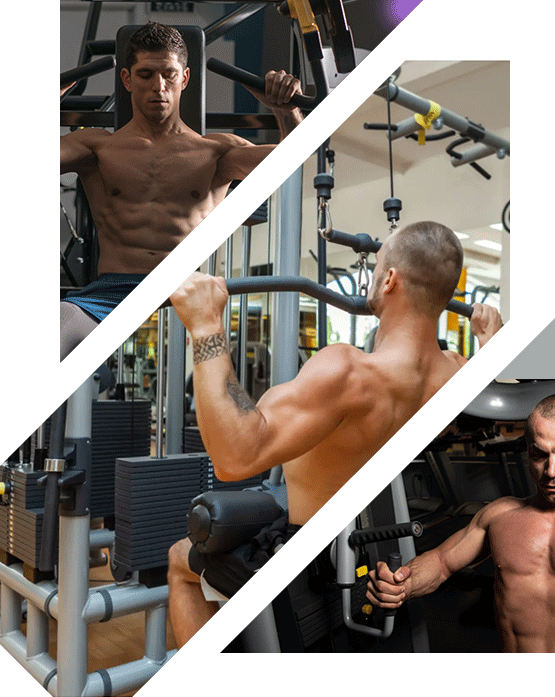
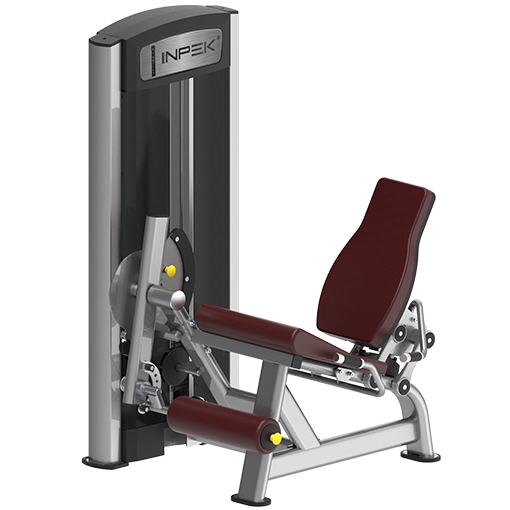
Maximizing Your Workout with the Leg Press Machine
Muscles Targeted by the Leg Press Machine
The leg press machine primarily works the quadriceps, hamstrings, glutes, and calves. It’s an excellent tool for comprehensive lower body training, helping users achieve balanced muscle development.
Proper Form and Technique
- Positioning: Sit with your back flat against the pad and place your feet shoulder-width apart on the footplate.
- Movement: Push the platform away by extending your legs, then slowly return to the starting position.
- Breathing: Exhale while pushing and inhale while returning to maintain proper breathing rhythm.
Common Mistakes to Avoid
- Lifting your hips off the seat, which can strain your lower back.
- Locking your knees at the top of the movement, which can lead to joint stress.
- Using too much weight, which can compromise form and increase the risk of injury.
Safety Tips
- Always warm up before using the leg press machine to prepare your muscles and joints.
- Start with lighter weights to master the technique before progressing to heavier loads.
- Use the safety lock to prevent the platform from falling during your workout.
Who Can Benefit?
The leg press machine is suitable for fitness enthusiasts of all levels, from beginners to advanced athletes. It’s also ideal for individuals recovering from injuries, as it provides a controlled range of motion that minimizes strain on the joints.
Hack Squat vs. Leg Press Machine – Which is Better?
When it comes to lower body strength training, both the hack squat and leg press machine are highly effective for developing the quadriceps, hamstrings, glutes, and calves. However, each machine has distinct differences in mechanics, muscle activation, and suitability for different fitness levels. The hack squat mimics a traditional squat but provides guided movement, making it an excellent tool for building leg strength and stability. On the other hand, the leg press machine allows for a more isolated and controlled movement, reducing spinal strain and offering a safer alternative for beginners or individuals with joint issues. Understanding the pros, cons, and biomechanics of each exercise can help determine which is best suited for your goals.
Hack Squat – More Intensity and Full-Body Engagement
The hack squat machine is designed to simulate a barbell squat with additional stability. Unlike a free-weight squat, it follows a fixed movement path, making it easier to maintain proper form while still challenging the lower body muscles intensely.
Key Benefits of the Hack Squat:
- Increased Quadriceps Activation: Since the torso remains upright, the movement places a strong emphasis on the front of the thighs, making it ideal for quad development.
- Controlled Squatting Motion: The guided movement reduces the need for balance and coordination, allowing for greater weight loads to be used safely.
- Spinal Support: Compared to a barbell squat, the back is supported by a pad, reducing spinal compression and allowing for better posture during the exercise.
The leg press machine allows users to push weight with their legs while lying in a seated or reclined position. This setup helps to isolate the lower body without stressing the upper body or spine, making it a great beginner-friendly option. The best choice depends on your fitness level, goals, and physical limitations: Both the hack squat and leg press machine provide excellent lower-body workouts, but they serve different purposes and fitness levels. The hack squat is ideal for those wanting a more intense, quad-focused movement with functional squat benefits, while the leg press offers a more controlled, lower-impact option for individuals who want muscle growth with minimal joint strain. Incorporating both exercises into a well-rounded leg training routine can provide the best of both worlds, ensuring balanced muscle development and strength gains.Potential Drawbacks of the Hack Squat:
Leg Press Machine – A Safer and More Controlled Alternative
Key Benefits of the Leg Press:
Potential Drawbacks of the Leg Press:
Hack Squat vs. Leg Press – Which One Should You Choose?
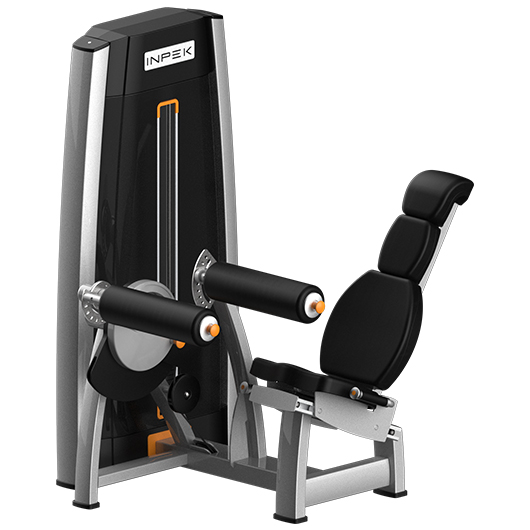
FAQs About Leg Press Machines
What is the leg press machine good for?
The leg press machine is excellent for building lower body strength, targeting muscles like the quadriceps, hamstrings, glutes, and calves. Unlike free weights, it provides guided movement, reducing the risk of injury and allowing for controlled resistance. This makes it a great option for beginners and experienced lifters alike. The machine is particularly beneficial for developing leg power and endurance without requiring extensive balance or coordination. It also helps improve knee stability and can be used for rehabilitation purposes. Additionally, by adjusting foot placement, users can emphasize different muscle groups, making the exercise highly versatile. Whether for muscle growth, strength training, or general fitness, the leg press machine is a valuable addition to any workout routine. However, to prevent injury, it’s essential to use proper form, avoid locking out the knees, and gradually increase weight based on individual strength levels.
Is it OK to do leg press every day?
While the leg press machine is an effective tool for building leg strength, using it every day is not recommended for most people. Muscles need time to recover and grow, typically requiring at least 24 to 48 hours of rest between sessions. Overtraining the legs can lead to muscle fatigue, reduced performance, and increased risk of injury, such as joint strain or ligament stress. Instead, incorporating the leg press machine into a well-balanced routine 2–4 times per week allows for optimal muscle recovery and strength development. If daily training is necessary, adjusting intensity and volume—such as alternating heavy and light days—can help prevent overuse injuries. Combining the leg press with other leg exercises, stretching, and proper nutrition will further enhance results while ensuring long-term joint health.
What is a good leg press weight for a woman?
The ideal leg press weight for a woman depends on fitness level, experience, and goals. Beginners should start with a light weight, typically around 50–100 pounds (including the machine’s sled weight) to focus on proper form and muscle activation. Intermediate lifters may press 100–200 pounds, while advanced lifters can exceed 200 pounds depending on strength and training history. A good benchmark is to start with a weight that allows for 10–15 controlled reps while maintaining proper form without locking the knees or using momentum. Progressive overload—gradually increasing weight over time—will help build strength safely. The leg press machine offers adjustable resistance, making it an effective and scalable exercise for women looking to build lower body strength without excessive joint stress.
Can you build legs with just leg press?
The leg press machine can significantly strengthen and grow leg muscles, but relying solely on it may limit overall development. It primarily targets the quadriceps, hamstrings, and glutes but lacks the functional movement patterns of compound free-weight exercises like squats or lunges. To maximize leg growth, incorporating a variety of exercises is beneficial. The leg press machine is excellent for isolating the legs and lifting heavy weights safely, making it a valuable tool in any leg-focused routine. However, combining it with exercises like squats, deadlifts, and step-ups can enhance muscle activation, improve balance, and develop stabilizing muscles. If using only the leg press, adjusting foot placement and resistance while progressively overloading can help maintain balanced leg development.
Does leg press reduce thigh fat?
The leg press machine strengthens and builds leg muscles, but it does not directly reduce thigh fat. Spot reduction—losing fat from a specific area through targeted exercise—is a myth. Fat loss occurs through a calorie deficit, meaning a combination of regular exercise and a healthy diet is necessary to reduce overall body fat, including in the thighs. However, using the leg press machine as part of a strength-training routine can help tone and define the thighs by increasing muscle mass. This, in turn, boosts metabolism, making it easier to burn fat over time. To achieve leaner thighs, combining leg press workouts with cardio, full-body strength training, and a balanced diet is the most effective approach.
Does leg press grow glutes?
Yes, the leg press machine can effectively target and grow the glutes, especially when foot positioning and range of motion are adjusted correctly. Placing the feet higher on the platform emphasizes the glutes and hamstrings, while a deeper range of motion increases muscle activation. However, the leg press does not engage the glutes as intensely as compound movements like squats and hip thrusts, which involve more hip extension. To maximize glute growth, incorporating variations such as single-leg presses, paused reps, or heavier resistance can help. While the leg press machine is a valuable tool for glute training, combining it with exercises like Romanian deadlifts, lunges, and hip thrusts will lead to more balanced glute development.
Does leg press strengthen the knees?
The leg press machine can help strengthen the knees by improving the quadriceps, hamstrings, and glutes, which provide stability to the knee joint. When performed with proper form and moderate resistance, the leg press can enhance knee function and support injury prevention. However, excessive weight or improper technique—such as locking the knees or using a shallow range of motion—can place undue stress on the joints. For those recovering from knee injuries, the leg press machine can be a safer alternative to free-weight squats, as it provides controlled movement and reduces unnecessary strain. To further strengthen the knees, incorporating mobility exercises, stretching, and additional lower-body movements, such as step-ups or leg extensions, is recommended.
How deep should you go on leg press?
When using the leg press machine, depth is crucial for maximizing muscle activation while protecting the knees and lower back. Ideally, you should lower the weight until your knees form a 90-degree angle or slightly deeper, ensuring the thighs are parallel to the foot platform. Going too shallow limits effectiveness, while going excessively deep—bringing the knees too close to the chest—can increase the risk of lower back strain and knee stress. A proper range of motion depends on flexibility, knee health, and overall comfort. Keeping the movement controlled, avoiding momentum, and maintaining proper foot placement will enhance safety and effectiveness.
Is leg press better for the knees?
The leg press machine can be easier on the knees compared to exercises like barbell squats because it provides controlled movement and reduces the need for balance and stabilization. It strengthens the quadriceps, hamstrings, and glutes, which support knee stability. However, improper form—such as lowering the weight too far or locking the knees—can strain the joints. To minimize knee stress, use a moderate weight, keep feet positioned shoulder-width apart, and avoid excessive depth. While the leg press machine can be beneficial for those with knee concerns, incorporating other exercises like step-ups and leg extensions can further strengthen knee-supporting muscles. Consulting a professional before starting heavy leg press training is recommended, especially for individuals with existing knee conditions.
Which is better: leg press or lunges?
The leg press machine and lunges both target the lower body but serve different purposes. The leg press is better for building raw strength and muscle mass because it allows for heavier loads with reduced joint strain. It isolates the quadriceps, hamstrings, and glutes without requiring balance or coordination. Lunges, on the other hand, are a functional movement that enhances stability, mobility, and coordination, engaging additional muscles like the core and hip stabilizers. While the leg press is ideal for progressive overload and muscle hypertrophy, lunges improve athletic performance and balance. The best approach depends on individual goals—if focusing on strength and controlled resistance, the leg press machine is superior. For functional fitness, agility, and unilateral training, lunges are more effective. Combining both exercises in a routine yields the best results.
Does leg press increase testosterone?
The leg press machine, like other resistance exercises, can contribute to increased testosterone levels, but the effect depends on intensity, volume, and overall workout structure. Heavy compound movements, such as squats and deadlifts, have a greater impact on hormonal response than machine-based exercises like the leg press. However, performing the leg press with heavy resistance and proper intensity—using progressive overload and multiple sets—can stimulate testosterone production. Hormonal increases from leg pressing alone are not significant enough to cause major changes, but when combined with compound movements, proper nutrition, and adequate rest, it can contribute to overall strength gains and muscle growth.
Why is single leg press so hard?
The single-leg press is more challenging than the traditional leg press machine exercise because it requires greater balance, coordination, and unilateral strength. Unlike the standard leg press, which distributes weight evenly between both legs, the single-leg version forces one leg to bear the entire load. This increases stabilizer muscle engagement and exposes any strength imbalances between the legs. Additionally, unilateral exercises require more effort from the glutes and core to maintain proper alignment. The increased difficulty makes the single-leg press an excellent exercise for addressing muscle imbalances, enhancing athletic performance, and reducing injury risk. To make it more manageable, start with lighter weight, focus on controlled reps, and gradually increase resistance.
Who should avoid leg press?
The leg press machine is a valuable lower-body exercise, but some individuals should approach it with caution or avoid it altogether. Those with knee injuries, lower back issues, or hip problems may experience discomfort or increased strain when performing the leg press, especially with poor form or excessive weight. People with limited ankle or hip mobility may struggle to maintain proper depth without compensating with improper posture. Additionally, individuals with a history of herniated discs or spinal conditions should be cautious, as excessive weight or improper positioning can increase lower back compression. Pregnant women, particularly in later stages, may need to modify or avoid the leg press to prevent excessive intra-abdominal pressure. If experiencing discomfort or pre-existing conditions, consulting a fitness professional or physical therapist is recommended before using the leg press machine.
Why shouldn’t you straighten your legs on leg press?
Straightening your legs completely, or locking out your knees, on the leg press machine can be dangerous and lead to serious injuries. When the knees lock under heavy resistance, the weight shifts entirely onto the knee joints instead of being supported by the muscles. This can result in hyperextension, ligament damage, or even joint dislocation. Additionally, locking out removes muscle engagement, reducing the effectiveness of the exercise. To stay safe, maintain a slight bend in the knees at the top of the movement and focus on controlled reps without using momentum. This ensures continuous muscle activation and protects the joints from excessive strain. Proper foot placement and moderate weight selection also help maintain safe and effective execution of the leg press.
What happens if you leg press too much weight?
Overloading the leg press machine with excessive weight can lead to poor form, muscle strain, and serious injuries. When the weight is too heavy, lifters often compensate by using shallow reps, improper foot positioning, or momentum, reducing the exercise's effectiveness. Additionally, excessive weight increases the risk of lower back strain due to improper spinal alignment, especially if the lower back rounds at the bottom of the movement. Knee injuries are also a concern, as too much resistance can cause hyperextension, ligament damage, or joint stress. To avoid these risks, choose a weight that allows for full range of motion with controlled reps while maintaining good posture. Progressive overload should be gradual, focusing on strength gains over time rather than lifting the heaviest possible weight.
Should I Do Squats and Leg Press on the Same Day?
Yes, you can do squats and leg press on the same day, but it depends on your training goals and recovery capacity. Squats engage multiple muscle groups, including the core, glutes, hamstrings, and quads, making them a compound exercise that builds overall lower-body strength. The leg press isolates the quadriceps, hamstrings, and glutes with less core activation. Doing both exercises in the same workout can be beneficial for hypertrophy and strength development, but be mindful of fatigue. If you squat heavy, consider using the leg press as an accessory exercise with lighter weight and higher reps. Conversely, if leg press is your primary focus, avoid overloading your legs before squats. Beginners may want to separate them into different sessions to optimize performance. Recovery, volume, and intensity should be factored in when incorporating both exercises into a workout routine.
What Is Better, Leg Press or Squats?
The squat is generally considered superior to the leg press for overall functional strength, athletic performance, and core engagement. Squats require coordination, balance, and mobility while engaging multiple muscle groups, including the core, glutes, quads, hamstrings, and stabilizers. This makes them excellent for building strength and power. However, the leg press can be beneficial for isolating the lower body, especially if you have mobility restrictions or need a machine-assisted movement. It allows for targeted muscle engagement with less strain on the lower back and core. For beginners or those recovering from injuries, the leg press may be a safer option. However, if your goal is to develop full-body strength, squats should be prioritized. Ideally, both exercises can be incorporated into a balanced leg workout, with squats building foundational strength and the leg press assisting in muscle hypertrophy.
What Is the Starting Weight for Leg Press?
The starting weight for the leg press depends on your fitness level, experience, and the type of leg press machine being used. A good rule of thumb is to start with a weight that allows you to perform 12–15 reps with proper form. For beginners, this typically means using just the weight of the sled, which is usually between 45 to 75 pounds (20 to 34 kg) on a standard 45-degree leg press machine. If you have some lifting experience, you can start with 50–70% of your squat weight. Gradually increase the weight as you build strength, ensuring you can still control the movement and maintain proper form. Avoid overloading the machine too soon, as this can lead to improper execution and increased risk of injury. Proper warm-up and progressive overload are key to effectively increasing your starting leg press weight.
Does Leg Press Burn Belly Fat?
The leg press itself does not directly burn belly fat, as spot reduction is a myth. However, it can contribute to overall fat loss when incorporated into a well-rounded fitness routine. The leg press is a resistance exercise that builds muscle, and increased muscle mass leads to a higher resting metabolic rate, which helps burn more calories throughout the day. For fat loss, including belly fat reduction, you should focus on a combination of strength training, cardiovascular exercise, and proper nutrition. High-intensity interval training (HIIT) combined with resistance training, including leg presses, can improve fat oxidation and overall calorie expenditure. To effectively lose belly fat, aim for a caloric deficit through a healthy diet while maintaining an active lifestyle. While the leg press strengthens and sculpts the lower body, reducing belly fat requires an overall approach that includes diet and full-body movement exercises.
What Are the Disadvantages of a Leg Press Machine?
While the leg press is an effective lower-body exercise, it has some disadvantages. One major drawback is the lack of core and stabilizer muscle engagement compared to free-weight exercises like squats. The fixed movement pattern of the leg press can lead to muscular imbalances over time, as it isolates the quadriceps, hamstrings, and glutes without requiring stabilization. Additionally, improper foot placement or excessive weight can place undue stress on the knees, lower back, and hips, increasing the risk of injury. The leg press can also create a false sense of strength, as it allows users to push heavier weights than they could in a squat due to the machine's stability. This can lead to overconfidence and potential injury if transitioning to free-weight movements. To mitigate these disadvantages, incorporate a variety of lower-body exercises and focus on proper form and controlled movements.
What Is a Good Leg Press Weight?
A good leg press weight varies based on individual strength levels, training experience, and goals. For beginners, pressing 1.5 times their body weight is a reasonable goal, while intermediate lifters may aim for 2 times their body weight. Advanced lifters can press 2.5 to 3 times their body weight. However, these numbers should not be the sole focus; proper form, full range of motion, and muscle engagement are more important. For general fitness and muscle endurance, using 50–70% of your one-rep max (1RM) for 10–15 reps is ideal. For strength building, 80–90% of your 1RM for 5–8 reps is effective. Overloading with excessive weight can lead to improper form and injuries, especially if the knees cave in or the lower back lifts off the pad. Always prioritize controlled movements and a weight that allows proper execution.
Is Leg Press Bad for the Lower Back?
The leg press can put strain on the lower back if performed incorrectly, but when done with proper form, it is generally safe. One common mistake is rounding the lower back (posterior pelvic tilt) at the bottom of the movement, which places excessive pressure on the lumbar spine. This often happens when the weight is too heavy or the range of motion is too deep. Another issue is improper foot placement, which can lead to hip discomfort and compensatory movements that strain the lower back. To minimize the risk, keep your back flat against the seat, use a moderate weight, and avoid locking out your knees. If you have a history of lower back pain or herniated discs, consult a fitness professional or physical therapist before using the leg press. Strengthening the core and improving flexibility can also help protect the lower back from unnecessary strain.
How Many Reps for Leg Press?
The number of reps for the leg press depends on your fitness goals. For strength training, aim for 4–6 reps with heavy weight (80–90% of your 1-rep max). If your goal is muscle hypertrophy (growth), 8–12 reps at 65–75% of your max is ideal. For muscular endurance and conditioning, higher rep ranges of 12–20 with lighter weight (50–60% of your max) work best. Beginners should start with moderate weight and 10–15 reps to build strength and proper form. Advanced lifters may incorporate different rep schemes, including pyramid sets or drop sets, to maximize muscle fatigue and growth. It’s essential to maintain control throughout the movement, avoid locking out the knees, and ensure full range of motion. Regardless of the rep range, progressive overload—gradually increasing resistance over time—is key to continued strength and muscle gains.
Top 10 high-tech manufacturing hubs
End-to-end integrated manufacturing, fully integrated recycling production line
You see more than just a factory
Intelligent steel pipe production line
Next generation laser cutting technology
Intelligent pipe bending process
Intelligent mechanical welding
New generation spraying process system
Delivering superior quality through pre-assembled solutions
Our Valued Clients







Collaborate with Inpek Fitness Experts for Your Commercial Gym Projects
Looking to enhance your gym with premium equipment? Have inquiries or ideas? Complete the form below to engage with our expert team. We’ll work with you to realize your fitness facility goals efficiently and effectively.


